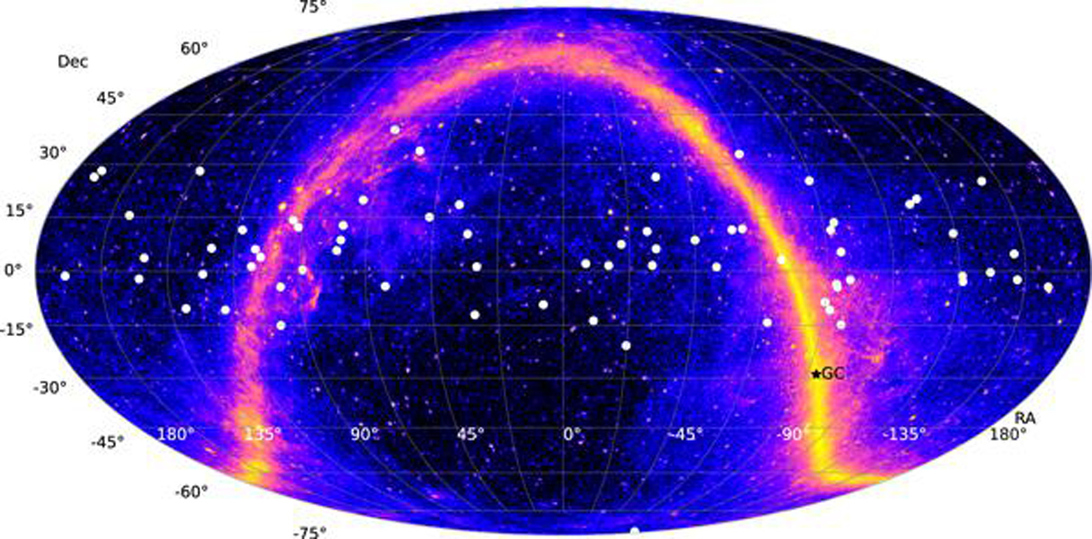Russian scientists made a discovery by first registering neutrino fluxes from the Milky Way
[ad_1]
One third of the high-energy neutrinos flying towards us from space, which are registered by observatories in different parts of the world, are born in or near our Milky Way. This conclusion was made by a group of scientists from the Physical Institute. Lebedev Institute of Physics and Technology of the Russian Academy of Sciences (FIAN), the Institute for Nuclear Research of the Russian Academy of Sciences, the Moscow Institute of Physics and Technology, and the Institute of Radio Astronomy of the Max Planck Society (MPIfR, Germany).
Neutrinos, or “ghost particles,” as science fiction writer Isaac Asimov once described them, are extremely reluctant to interact with matter, which makes them very difficult to register. But on the other hand, almost nothing affects the speed of their movement and nothing can be an obstacle for them – every second the Earth and you and me are “flashed” through millions of primordial neutrinos, born by distant galaxies, and we don’t even notice it.
In fact, neutrinos can be born in the bowels of our Earth (they are called geoneutrinos), and in nuclear reactors, and on the Sun. But we call all these types of particles low-energy, in contrast to those that fly towards us from the depths of the Universe. The latter are much less studied, and therefore are of particular interest to scientists, like the building blocks of our universe.
If heavier particles – protons and neutrons can be created and registered in special accelerators or ring accelerators of elementary particles (colliders) on Earth, then it was not so easy to catch light neutrinos.
Neutrino observatories are being built to capture them. To date, three have been created to detect high-energy particles from space: the American IceCube in Antarctica, our Russian Baikal Neutrino Telescope (also known as the Baikal-GVD project) and the European KM3NeT.
Until recently, these detectors “saw” only those neutrinos that flew towards us from distant galaxies – quasars. Scientists suspected that our home galaxy, the Milky Way, could also give birth to neutrinos, but until recently they had no way to test this.
“Neutrinos are generally very difficult to catch, for this you need kilometers of water or ice,” says FIAN employee, Candidate of Physical and Mathematical Sciences Alexander Plavin. – In addition, it was necessary to come up with the right methods to distinguish neutrinos from our Galaxy from neutrinos from other galaxies. And we were the first in the world to come up with such methods. Neutrinos from the Milky Way were registered by us using the IceCube observatory.
– What is the percentage of high-energy neutrinos coming from the Milky Way?
– We detect about one third of such particles from our Galaxy.
– What is the neutrino observatory that helped to “catch” them?
– IceCube is a cubic kilometer of ice located several kilometers below the ice in Antarctica. The ice observatory is all entangled with sensors-photodetectors that record flashes that are born when neutrinos interact with other particles passing through the ice.
– That is, ice is needed so that the detector can “see” flashes in it? Why do they arise if neutrino particles do not interact with anything?
“They interact only rarely, and the larger the amount of transparent matter, the more likely we are to register such “meetings.” And such observatories are the only way for us to expand our knowledge of the physics of elementary particles that make up our Universe.

– But in accelerators like the Large Hadron Collider they create particles…
– They do, but not so high-energy ones. It is generally impossible to create them artificially on Earth, because it is impossible to create such energies that drive them – in 1 peta-electron volt, or quadrillion electron volts (a million billion electron volts, or 10 to the power of 15 electron volts – Auth.). Therefore, if we want to advance further in our knowledge of nature, then a simple and affordable way is to catch neutrinos from space, where they were created by some powerful objects.
– What have the “caught” neutrinos already “told” to the researchers?
– These are very light particles that reach us in an unchanged state – as they were emitted billions of years ago in a distant quasar, they arrive like that. Therefore, they give the most accurate information about the central regions of other galaxies, which are not visible in other ways. Their light does not reach us, but neutrinos do.
Help “MK”.
The time it takes for a neutrino to reach the Earth:
– from the Sun – 8 minutes
– from the Milky Way – tens and hundreds of thousands of years
– from quasars – billions of years.
– What gives birth to them in distant galaxies?
“Something very powerful that plays the role of particle accelerators in galaxies up to very high energies. Such accelerators can be super-powerful black holes.
– It turns out that in our Galaxy such an accelerator is our black hole – Sagittarius A?
– So far, we have only recorded that neutrinos fly towards us from the side of the Milky Way, but so far we cannot say that our black hole gave birth to them. It is possible that they come from a region located in the same plane as the Milky Way.
[ad_2]
Source link








